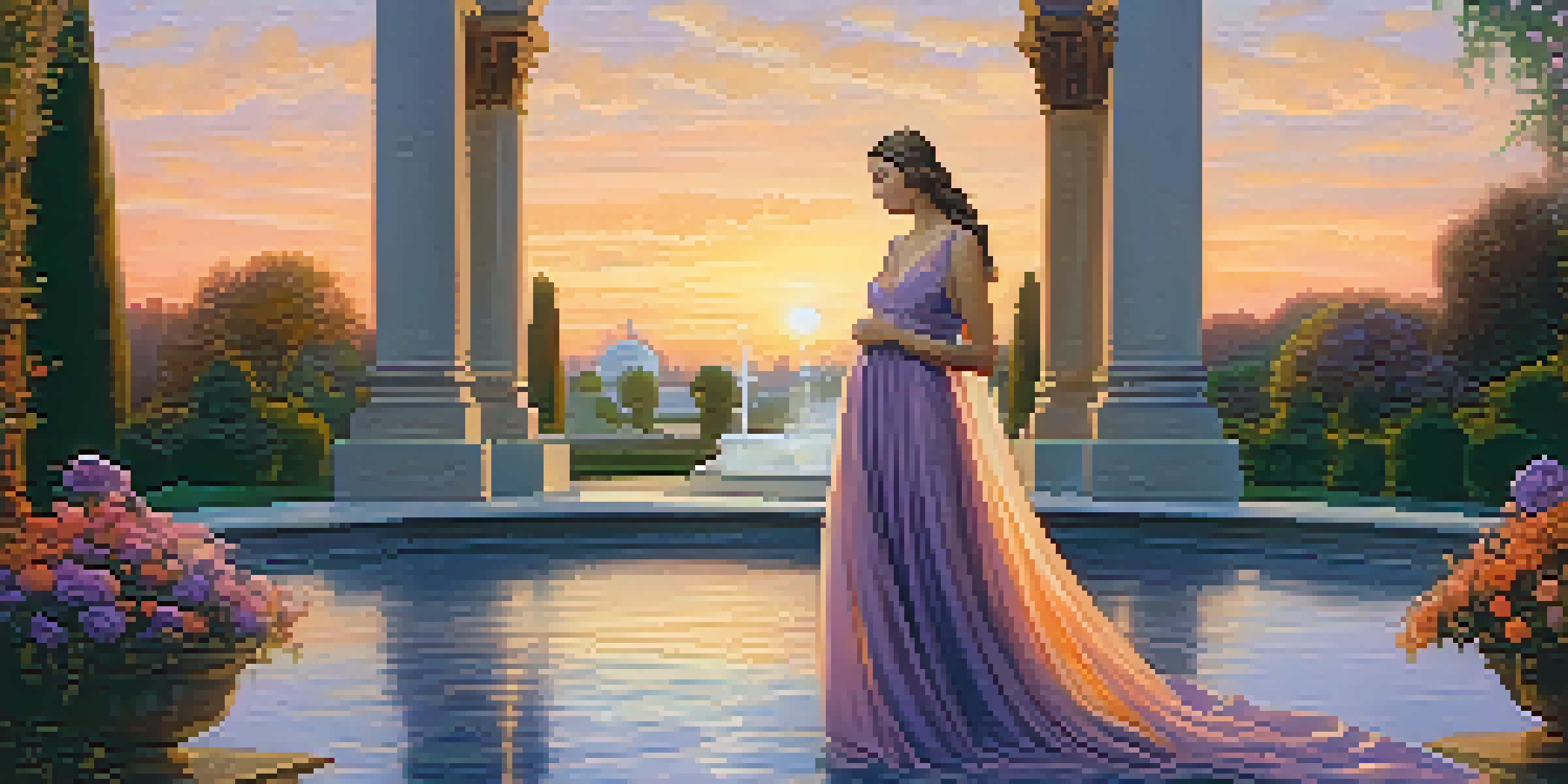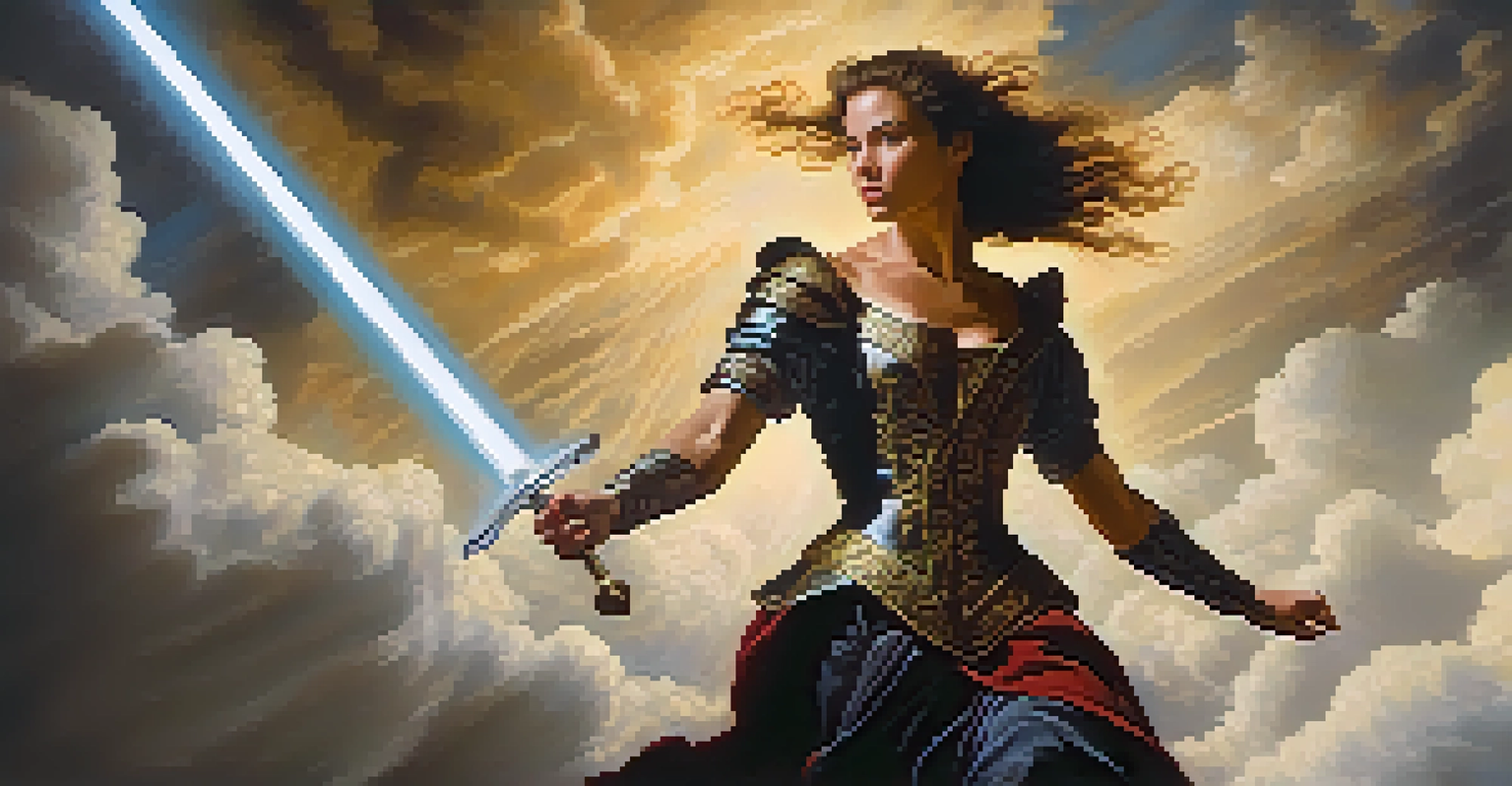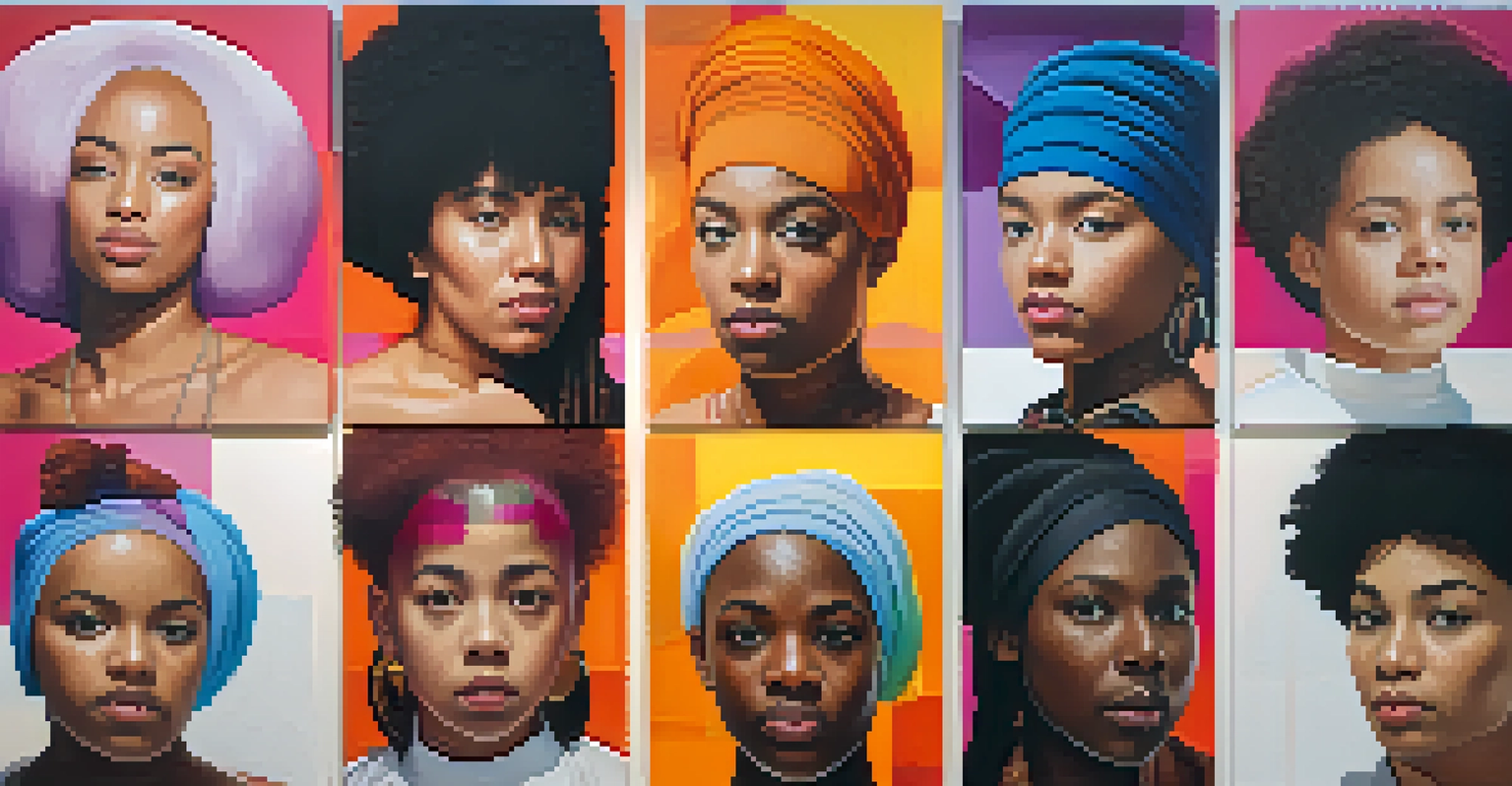Exploring Gender Representation in Art Throughout History

The Roots of Gender Representation in Ancient Art
From ancient civilizations, art has mirrored societal views on gender. In early cultures, like those of the Egyptians and Greeks, gender roles were often clearly defined, with men depicted as powerful figures while women were shown in more passive roles. This distinction not only reflected but reinforced the social hierarchy of the time.
Art is the most beautiful of all lies.
For instance, Egyptian tomb paintings often celebrated male achievements while relegating women to domestic spheres. Similarly, Greek pottery showcased male athletes and warriors, effectively sidelining women's contributions. This pattern established a narrative that would persist for centuries, shaping how genders were represented in various artistic forms.
Related Resource
These early representations set the stage for ongoing discussions about gender in art. They raised questions about who gets to be seen and celebrated in the creative landscape, a theme that still resonates in contemporary art discussions.
The Renaissance: A Shift in Artistic Focus
The Renaissance marked a significant turning point in gender representation, as artists began to explore more complex human emotions and characters. While male artists like Leonardo da Vinci and Michelangelo dominated the scene, women started to emerge, albeit slowly, often as muses rather than creators. This era saw the rise of iconic works that showcased female beauty and virtue, but often through a male lens.

Portraits of women from this period, like Titian's 'Venus of Urbino', exemplify the idealized female form, celebrating femininity yet often objectifying women. This duality raises intriguing questions about the role of the artist and the viewer in interpreting gender. Are these images empowering, or do they reinforce traditional stereotypes?
Art Reflects Gender Roles Over Time
Throughout history, art has mirrored societal views on gender, often reinforcing traditional roles and stereotypes.
As we delve deeper into the Renaissance, it's essential to recognize both the progress and the limitations of this era. While art began to reflect a broader spectrum of human experience, gender representation remained largely skewed towards male perspectives, setting the stage for future shifts.
The Baroque Period: Embracing Complexity
During the Baroque period, artists began to depict women in more dynamic and complex roles. This era was characterized by dramatic contrasts and emotional intensity, allowing for a richer portrayal of female figures. Artists like Artemisia Gentileschi broke through societal barriers, creating powerful images of women that defied traditional expectations.
Every artist dips his brush in his own soul, and paints his own nature into his pictures.
Gentileschi’s famous painting, 'Judith Slaying Holofernes', portrays a strong, decisive woman, challenging the passive depictions that had dominated earlier art. Such representations not only highlighted female strength but also invited viewers to reconsider women's roles in society. This shift was significant in reflecting the tumultuous social changes of the time.
Related Resource
The Baroque period thus stands as a testament to the evolving narrative around gender in art. It showcased a growing acknowledgment of women's agency, hinting at the broader movements toward gender equality that would come in the centuries ahead.
The 19th Century: Challenging Norms and Breaking Barriers
The 19th century saw a dramatic shift as artists began to challenge traditional gender roles. Movements like Romanticism and Realism allowed for more personal and nuanced portrayals of women, with artists like Mary Cassatt and Berthe Morisot leading the charge. They depicted women in everyday settings, capturing their thoughts and emotions in a way that had rarely been done before.
These female artists not only contributed to the art world but also pushed against the boundaries imposed by a male-dominated society. Their works often reflected the struggles and triumphs of women, making art a powerful vehicle for social change. This era laid the groundwork for future feminist movements in both art and society.
Women Artists Break Through Barriers
From the 19th century onwards, female artists began to challenge and redefine gender representations in art, paving the way for future generations.
As we reflect on this century, it's clear that the representation of gender in art became a platform for advocacy and expression. The evolution witnessed during this time not only changed how women were depicted but also opened doors for future generations of female artists.
Modernism: A New Wave of Gender Exploration
The Modernist movement of the late 19th and early 20th centuries propelled gender representation into uncharted territory. Artists like Georgia O'Keeffe and Frida Kahlo used their work to explore identity, sexuality, and the complexities of womanhood. This period marked a departure from traditional representations, embracing abstraction and personal narrative.
Kahlo, in particular, is known for her deeply personal and often painful explorations of gender and identity. Her self-portraits challenge conventional notions of femininity, inviting viewers to engage with her experiences. Modernism thus became a space for artists to express their individual truths, pushing back against societal norms.
Related Resource
Through these innovative approaches, Modernism redefined how gender could be represented in art. It opened pathways for dialogue about gender identity and expression, themes that continue to resonate in contemporary art today.
Contemporary Art: Diverse Perspectives on Gender
In contemporary art, the representation of gender has expanded to include a multitude of voices and experiences. Artists from diverse backgrounds challenge traditional norms, using their work to explore intersectionality and fluidity in gender identity. This shift reflects a broader societal movement towards inclusivity and understanding.
For example, artists like Zanele Muholi and Cindy Sherman use photography to interrogate gender roles and societal expectations. Their work not only highlights individual stories but also addresses larger cultural issues, inviting viewers to rethink their perceptions of gender.
Modern Art Explores Gender Identity
The Modernist movement opened new avenues for exploring gender identity and expression, encouraging dialogue about the complexities of womanhood.
Contemporary art thus serves as a mirror to our evolving understanding of gender, showcasing the richness of human experience. This ongoing exploration encourages dialogue and fosters a deeper appreciation for the diverse ways gender can be expressed and understood.
The Future of Gender Representation in Art
As we look toward the future, the conversation around gender representation in art continues to evolve. With the rise of digital platforms and global connectivity, emerging artists have unprecedented opportunities to share their perspectives. This democratization of art allows for a broader range of voices to be heard, enriching the artistic landscape.
Moreover, as society grapples with issues of gender identity and representation, artists are likely to respond with even more innovative and thought-provoking works. The blend of technology and creativity offers new avenues for exploring gender, pushing the boundaries of what art can represent.

Ultimately, the future of gender representation in art is bright and full of potential. As artists continue to challenge norms and inspire change, we can expect to see an even richer tapestry of stories that reflect our diverse human experience.